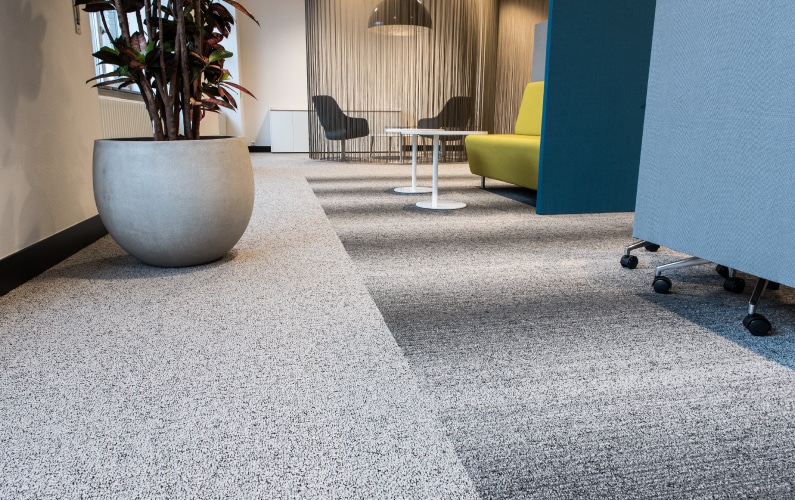Is it time to replace your facility’s flooring?
Often, facility managers will know when the flooring system needs to be replaced. The signs of a necessary replacement can include:
- Visible wear and tear. Frayed carpet edges, scratches in the vinyl, dingy grout lines that won’t get clean — whatever it is, you know it looks worn and needs replacing.
- Safety issues. If there are tripping hazards or other damages that have put safety codes at risk (such as with this VA hospital, where loose and buckled tiles became a hazard for blind and vision impaired patients), you’ll need to look at updating the floor.
- Major damage from an unexpected event. It’s something you never want to deal with. But sustaining damage from a flood, fire or burst pipe can lead you to reevaluate your current flooring system.
- Scheduled end-of-life. Flooring systems can last a finite amount of time — sometimes 5 years, sometimes 25 — but if you’re approaching the end of that timeline, replacement can help you get ahead of wear or safety issues.

Or perhaps the decision is less performance-driven and more about an aesthetic refresh, such as updating your look for a new tenant, a new layout (and the need to resurface where old walls were) or a more on-trend design.
Additionally, there are a few indicators that aren’t immediately noticeable to the untrained eye. These can signify that you need to replace the flooring system, or perform additional work alongside your replacement (typically related to the slab).
Commercial flooring contractors know to look out for these signs — and now you can, too:
Flooring adhesive seeping through the seams
This can indicate there is moisture in your slab. Because most flooring adhesives are water-based, they react negatively when they come in contact with water vapor and moisture content (i.e., water that comes up through the slab). It will re-emulsify and become wet and puddled under the floor — causing a failure in the adhesive and the flooring system itself. In these scenarios, it’s possible that moisture remediation will need to accompany your flooring replacement.
Waviness or high/low spots on a floor that should be even
These small inaccuracies can point to substrate deficiencies, perhaps from a previous installation that wasn’t completed to a high standard. You may not need to immediately replace flooring if you spot this, but you probably want to include slab work in tandem with your next replacement.
Depending on the nature of the dips, your flooring partner will use a self-leveling concrete for larger dips, a feather edge patch for smoothing smaller inconsistencies or a combination. This will create a flat and consistent substrate for an evenly finished flooring product.
Cracks in grout lines
Spotting these in your porcelain, ceramic or natural stone tile floor can point to slab movement. These materials (and their cementitious layer below) by nature are not flexible like carpet tile or vinyl, so cracks in the slab eventually crack the tile, creating an eyesore and a safety hazard.
To remedy this issue, your flooring contractor may need to add crack isolation membranes prior to installing the new tile. These can come in different forms (primer, uncoupling membranes) and will allow some movement (some up to a ¼ inch) in the slab — without compromising the tile.
The beginnings of mold growth
Look out especially in food service areas, bathrooms and hospital rooms with showers. This can occur if the original installer failed to apply the proper waterproofing membrane and sealants, so you’ll want to address it correctly this time around.
Need your facility flooring project to go right?
Projects where everything goes right may not seem that exciting — and that’s precisely the point. We have about 400,000 of these projects under our belt (you can read about a few here). And we can help take the excitement out of your upcoming project, too. Simply fill out the form below to start the conversation.
